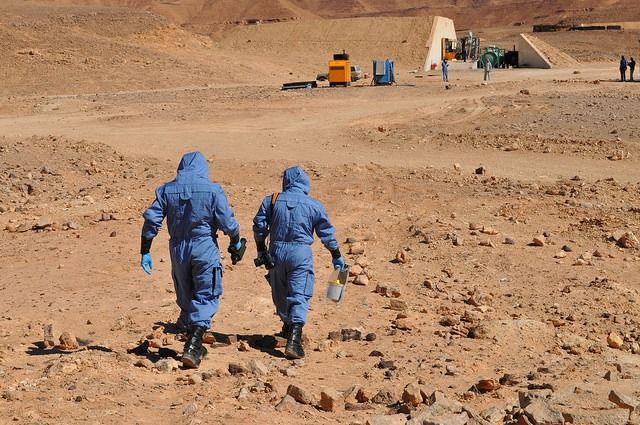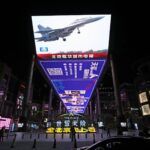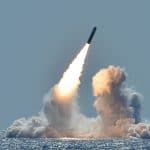North Korea’s other weapons of mass destruction
By Alexandra Bell, Abby Pokraka | August 1, 2018
 Inspectors from the Organization of the Prohibition of Chemical Weapons walking in the desert in Libya, October 2010. The same organization could play a role in North Korea. Image courtesy of OPCW, under Creative Commons License
Inspectors from the Organization of the Prohibition of Chemical Weapons walking in the desert in Libya, October 2010. The same organization could play a role in North Korea. Image courtesy of OPCW, under Creative Commons License
Achieving the final, fully verified denuclearization of North Korea will require the most complicated and rigorous security agreement ever negotiated. That means that the Trump Administration has an unprecedented challenge ahead of it, before even getting to other threats like North Korea’s conventional forces and ballistic missile program. Adding to the complications are the rumored North Korean chemical and biological weapons programs. The Trump Administration is right to focus on the North Korean nuclear program first, but it cannot ignore the chemical and biological threats for long, as they too present a serious large threat to the region. The political, legal, and technical obstacles to capturing these programs under any agreement are certainly manifold, but not insurmountable. There are previous programs and efforts that can provide a blueprint.
While the exact nature of Pyongyang’s chemical and biological weapons programs are unknown, the Kim regime hasn’t exactly been trying to tamp down speculation about his possible assets. In the winter of 2017, Kim Jong-un’s half-brother, Kim Jong-nam, was attacked in the Kuala Lumpur airport in Malaysia by two women who smeared his face with a cloth. Unbeknownst to the women, the cloth was covered in VX, the deadliest nerve agent ever created. Even a fraction of a drop absorbed through the skin can fatally affect the nervous system. Speculation abounds that Kim Jong-un ordered the attack. This incident may well have been a message about his capabilities; after all, there are many subtler ways to assassinate someone, a fact likely not lost on Chairman Kim.
US intelligence assessments from 2002 found North Korea possessed a sizable stockpile of chemical weapons. Officials believe there are six major storage sites and weapons reserves, of at least 180-to-250 tons of stockpiled chemical weapons. Bulk quantities of nerve, blister, choking, and blood agents could be delivered by ballistic missiles, conventional artillery, or aircraft. There are also at least eight industrial facilities that can produce chemical agents that could be used to support a chemical weapons program. North Korea is not a signatory to the nearly-universal Chemical Weapons Convention which bans the possession, production, stockpiling, and use of chemical weapons.
North Korea’s biological weapons program has reportedly been around since the 1960s. It is believed North Korea’s infrastructure could produce and weaponize biological agents such as anthrax, cholera, and the plague. Some assessments have suggested that North Korea might consider the use of bioweapons in a conflict. Significantly, North Korea acceded to the Biological Weapons Convention but has not made its biological research and development activities public.
To reduce and eliminate the threats posed by these programs, the United States, working with allies and regional partners, needs to establish the full size and scope of North Korea’s weapons stockpile and infrastructure. The next steps include full accession to and implementation of applicable international agreements; agreement on a plan for dismantlement of the programs; the establishment of acceptable verification and monitoring methods; and tools to aid implementation.
Fortunately, the United States has experience in dealing with the rollback of chemical and biological weapons programs. The most successful example is the Cooperative Threat Reduction Program, or CTR. Created after the Cold War to destroy Russian chemical and biological agents, and convert infrastructure and personnel into civilian roles, CTR implementation can provide lessons for negotiations with the North Koreans. The program’s creators, former Senators Sam Nunn and Richard Lugar, have already called for the Trump Administration to look into how the CTR model can be applied more broadly in North Korea.
We have an even more recent example, in the form of the international effort to remove and destroy Syria’s declared chemical weapon stockpile. On September 27, 2013, the Chemical Weapons Convention’s implementing body, the Organization for the Prohibition of Chemical Weapons, announced that Syria would accede to the treaty and be bound by its commitments. With that legal mandate in place, the United States, Russia, and a community of nations managed to safely remove and destroy 1,300 metric tons of chemical weapons and their precursors from the middle of a war zone. That stockpile was a threat to every man, woman, and child in the region.
Unfortunately, undeclared stocks remain in Syria and continue to be used. It is a stark reminder that efforts to prevent the spread and use of weapons of mass destruction are never really finished. Each effort can, however, inform and help improve the next.
Even with challenges like undeclared stocks, dealing with North Korea’s chemical weapons program is aided by the fact that the Chemical Weapons Convention has a formidable compliance regime. North Korean accession to the treaty should be a goal. Once it becomes a party to the agreement, Pyongyang would be subject to the kind of oversight that can help ensure that its chemical weapons program is indeed, and will remain, shuttered.
Unfortunately, the Biological Weapons Convention—which, remember, is the agreement that North Korea did sign—can provide no such assurance. In order to verify that the North Koreans are not producing or stockpiling biological weapons, US negotiators would need to build an acceptable framework for inspections of all suspected facilities, including those of a dual-use nature. This will require some creative technical thinking and again, a long look at how CTR-era practices can be applied in North Korea.
To be sure, Kim Jong-un’s nuclear weapons program is the most pressing threat to the region and the world. But given the unimaginable havoc and destruction that could be unleashed in either a chemical and biological attack, the Trump Administration should not lose sight of what should also be high on the list of priorities.
Editor’s note: The last sentence in the fourth paragraph: “Significantly, North Korea acceded to the Biological Weapons Convention but has not made its biological research and development activities public,” has been edited since the original post, to avoid any misunderstanding about obligations required under the Biological Weapons Convention.
Together, we make the world safer.
The Bulletin elevates expert voices above the noise. But as an independent nonprofit organization, our operations depend on the support of readers like you. Help us continue to deliver quality journalism that holds leaders accountable. Your support of our work at any level is important. In return, we promise our coverage will be understandable, influential, vigilant, solution-oriented, and fair-minded. Together we can make a difference.
Keywords: North Korea, OPCW, chemical weapons, weapons of mass destruction
Topics: Analysis
















Your analysis of the situation is a childish fantasy, what kind of idiot would expect Trump to be capable of handling any of this? He is a flailing moron.